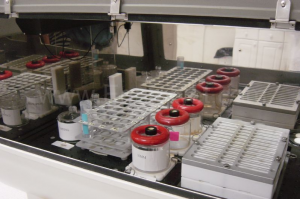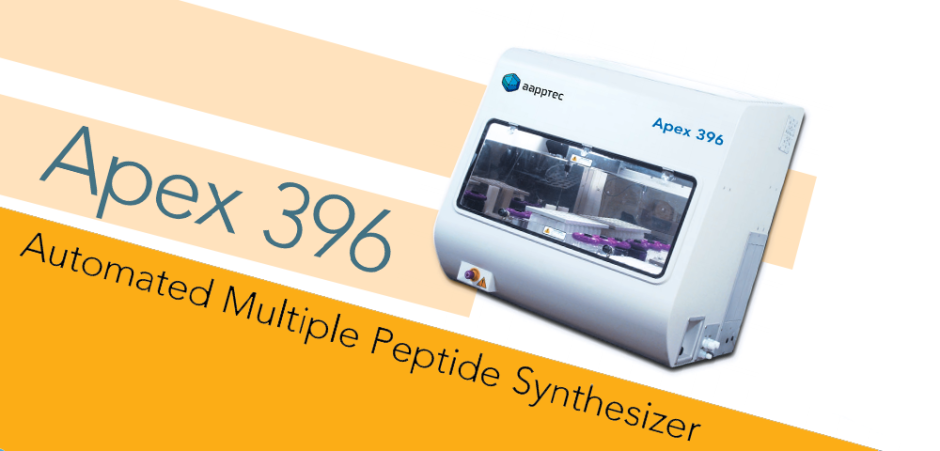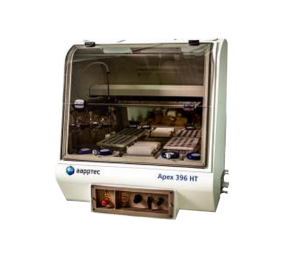Apex 396HT Automated Multiple Peptide Synthesizer
The Apex 396HT Peptide Library Synthesizer is the ideal peptide instrument for drug discovery, SAR studies, receptor binding studies and other applications utilizing high throughput screening of peptide libraries. The Apex 396HT automatically prepares and cleaves peptide libraries into standard 96 well titer plates ready for concentration and screening.
The Apex 396HT Peptide Library Synthesizer can prepare up to 192 peptides and cleave them into standard 1 mL-well titer plates with approximately 0.05 mmol of crude peptide in each well. The Apex 396HT can prepare larger quantities of peptides by utilizing AAPPTec Classic Reactor assemblies.
The Apex 396HT is based upon the very popular and reliable Apex 396. Like the Apex 396, the Apex 396HT utilizes robotic probes to deliver amino acid solutions and reagents with syringe-like accuracy and precision anywhere on the instrument work top.
The Apex 396HT Peptide Library Synthesizer features:
 two bottom-frit 96 well titer plate reactors
two bottom-frit 96 well titer plate reactors- two standard 36 vessel amino acid racks
- four 750 mL reagent bottles
- self-contained enclosed work space
- flexible, easy-to-use software
The Apex 396HT Peptide Library Synthesizer multiplies chemists’ productivity. It can prepare an entire library of peptides in the time it would take to synthesize one peptide manually. Plus, the Apex 396HT can operate automatically overnight or over the weekend without user intervention, further increasing productivity.
The Apex 396HT Peptide Library Synthesizer is the best peptide instrument for preparing libraries for high throughput screening.
Product Specifications








